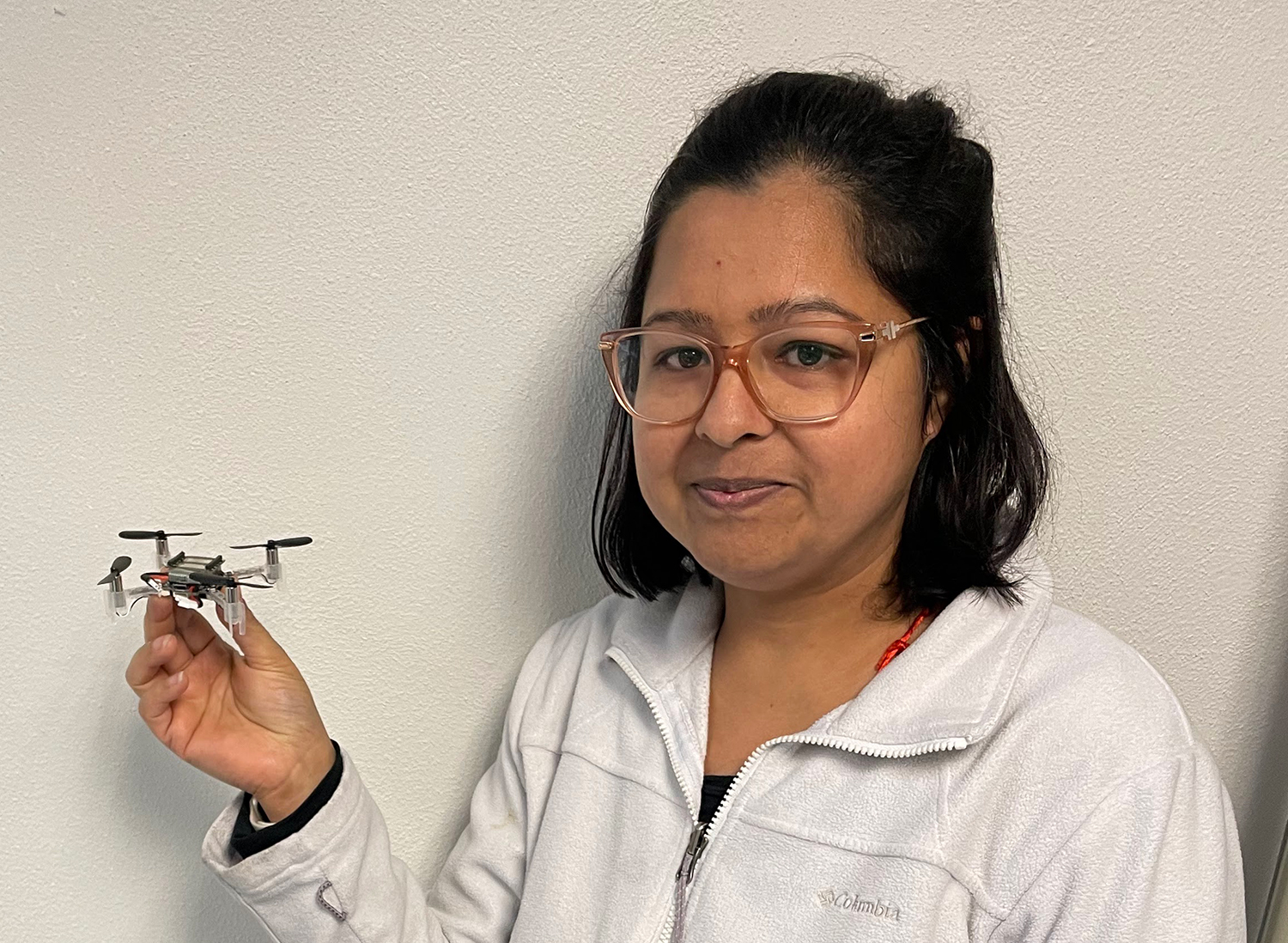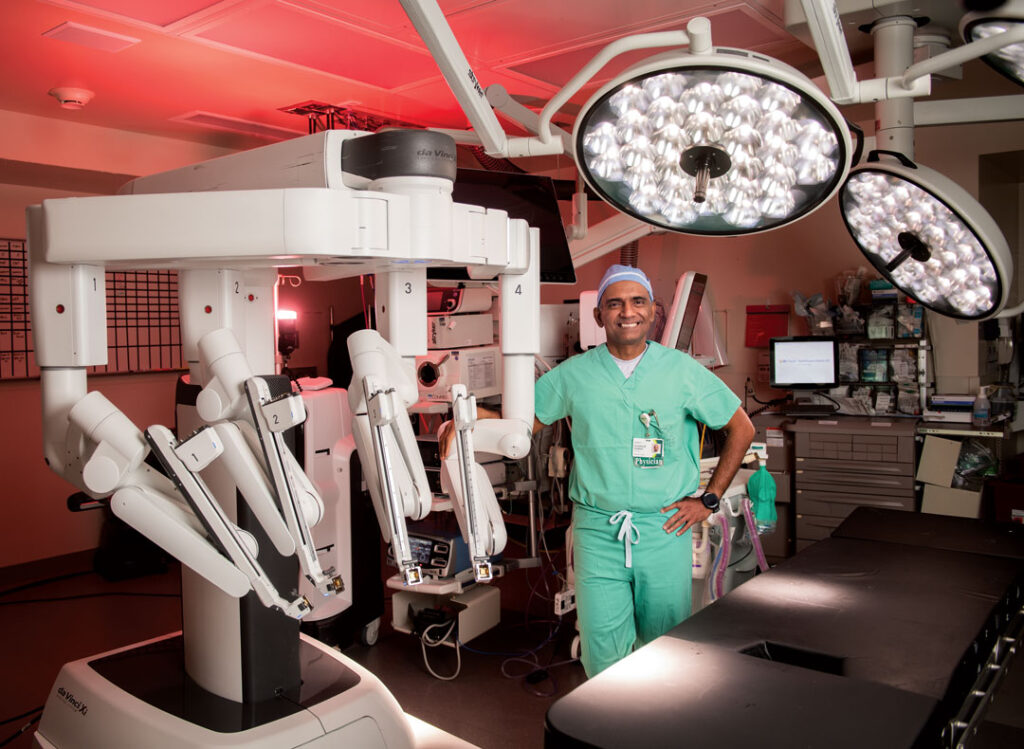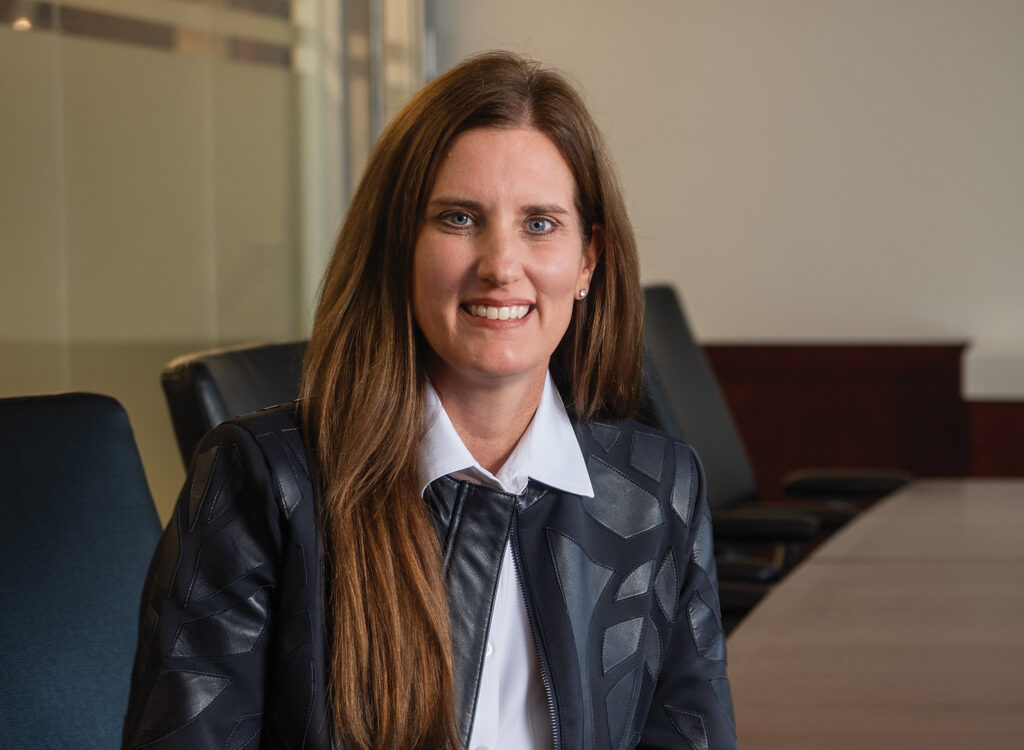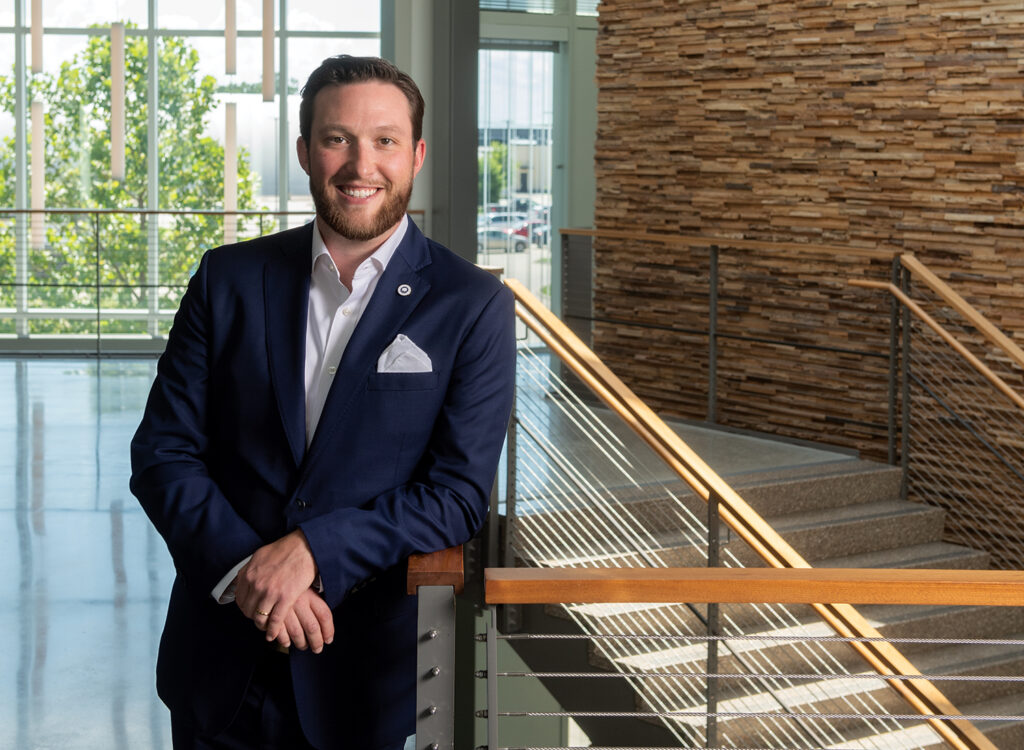Farmers, firefighters can benefit from UNI drone research

Lisa Rossi May 2, 2025 | 6:00 am
3 min read time
680 wordsBusiness Record Insider, Innovation and EntrepreneurshipDheryta Jaisinghani, an assistant professor in the department of computer science at the University of Northern Iowa, thinks about fire – and helping firefighters – a lot.
It started when she was reading an article about fire. Then she watched some YouTube videos. And then last year, her daughter’s classmate lost her house in a fire in Cedar Falls, where Jaisinghani’s campus is located.
“So I started thinking, and I also went and met the fire chief of Cedar Falls – what challenges [do] they face?” she said.
So what does a computer science professor do with her fascination with fire?
She persuades her department to fund a study on communicating drones, informally called the “Internet of Flying Things Network.” Communicating drones have a chip installed that allows them to communicate with one another, she said.
“They take pictures … of humidity, of smoke, and outside the firefighters can see inside internally what is happening … and quickly reach out,” she said.
Right now, firefighters have to go inside a burning building and survey everything, which is dangerous, she said.
“And they are completely reliant on their own knowledge, intuition or experience,” she said. “They do not yet have a technology, for example, to show them exactly what’s happening in the building so they can immediately go to the place where we have somebody trying to get out and they are not able to,” Jaisinghani said.
She said she has not seen a technology where “a mesh of drones can work together to sense multiple things, like smoke, temperature, sound, light, and image, and then build a report for [fire]fighters to help.”
Jaisinghani developed the “Internet of Flying Things Network” with the help of Andrew Berns, assistant professor in the computer science department at UNI.
Looking ahead, she wants to create a 360-degree view of a burning building, inside and outside included, “so that firefighters can [make] more informed and timely decisions on how to act upon casualties.”
Farmers can also benefit from this technology, she said.
One opportunity is farmers could have sensors in the soil that send data to the drones and then to the internet for further processing. Another is imagining how drones can survey an entire area and send the data to the internet, she said.
“Farmers can use [the] intelligence for more informed farming techniques,” she said.
Bill Harwood, a science and technology officer at UNI, said he works with faculty on developing projects that have commercial relevance.
Usually with a drone, you need a fixed node, which limits the area the node can read, Harwood said. The drone researchers wondered if they could do away with the fixed node and have the drones communicate directly with each other, even though they were moving all the time, he said.
“The drones themselves can create a moving local area network,” he said of the project, which is patent pending, meaning businesses can license it. “You’ve now got a flexible system that can function a lot more smoothly and with greater independence for the drones.”
Jaisinghani said professors working on the project are applying for a National Science Foundation grant of about $500,000 to continue research on communicating drones. She is working with two others: Alvika Gautam, senior research engineer in the department of mechanical engineering at Texas A&M University, and Anh Nguyen, assistant professor of computer science at the University of Montana.
She said the current project is an “extremely small prototype we have tested in the lab. Now we are planning to … develop an actual system.”
For future research, she said she also needs to decide if drones are sufficient in a fire situation.
“Are drones able to fly when there’s real smoke inside?” she said. “Do we need a mixture of drones and robots, and which will fit in what kind of scenario when there is a real fire? There are lots of research problems that need to be tackled. My hope is that once we solve these problems, we have a nice system ready to be used by actual firefighters.”

Lisa Rossi
Lisa Rossi is a staff writer at Business Record. She covers innovation and entrepreneurship, insurance, health care, and Iowa Stops Hunger.









